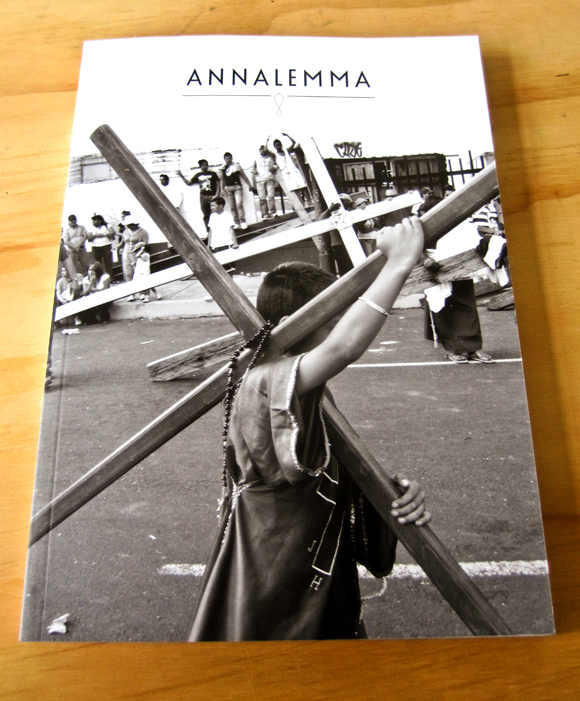The idea behind 48 Hour Magazine is an interesting one: Using all the tools of media available today to create a magazine that’s cool, fast and cheap.
In the opening letter the editors state they’re trying to marry the immediacy of the web with the permanence and beauty of print. A few weeks ago they announced a call to submit, people gave them their email addresses and the editors of fired off the starter pistol in the form of announcing the theme. Then a 48 hour frenzy of writing, photographing, illustrating and designing an entire 59 page magazine. Using a print-on-demand service called Mag Cloud, they uploaded a PDF file, figured out how much to charge for the magazine (Mag Cloud charges 20 cents per page) then folks go online, order it and it gets printed and shipped to them in a couple of days. Take a moment to catch your breath.
The only thing I’m having a problem with is this “beauty of print” part of the equation. While the print design is clean and straightforward, the images colorful and immediate, the actual quality of the book itself is inscrutable from anything you’ll find on the newsstands. I guess when I think of the “beauty of print” I think of magazines like Cabinet or McSweeneys, publications that treat the magazine as an artifact, another arena and opportunity to make something beautiful, to make a statement, and hopefully differentiate itself as much as possible from anything you could ever find on the web. But maybe that’s just me holding unrealistic standards.
The content is fun and resonant, the charts and graphs are colorful and informative. But the words seem to only skim the surface, a roadblock they no doubt hit due to their time constraint. It’s hard to come up with in-depth writing in less than two days.
The most impressive and appealing thing about 48HR is the speed with which it was created, a speed that speaks to the youthful feel of the book. The energy and exceitment, even the theme of the issue (Hustle), radiate this kind of vibrancy and possibility that’s downright sexy.
Final verdict: awesome (revolutionary?) media experiment. Future of print? Debatable.





















